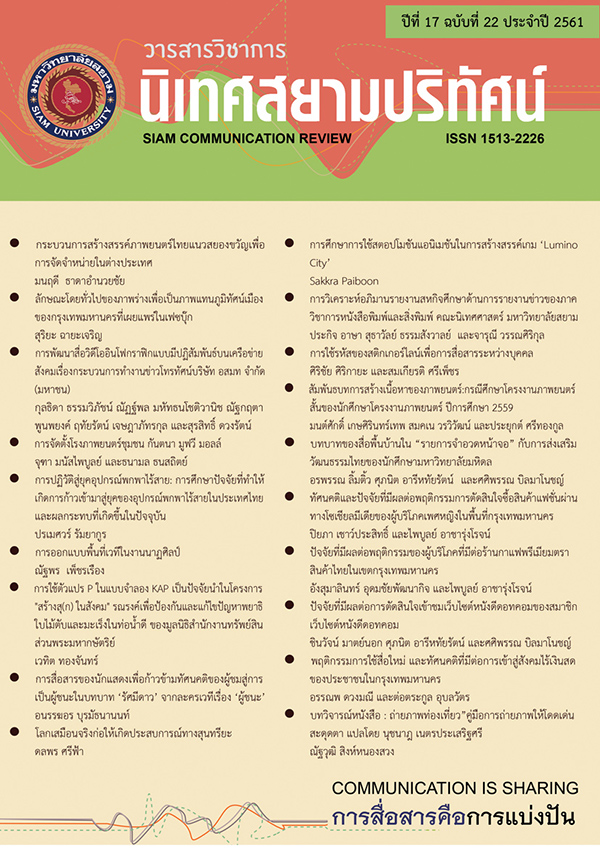Thai Horror Film Creation Process for Overseas Distribution
Main Article Content
Abstract
This research aimed at creating horror film which presents the horrible scene for the dirstibution to the overseas country especially Asean countries. The concept of creative research and stage of film production were applied as the research framework. The methodologies applied in this research were participant observation as the researcher was the executive producer of the film “Love Rain” (the selected project) , depth interviews with directors and foreign film buyers and related document collection. Results indicated that Thai horror films were needed in Southeast Asean market. The producer got the brief from foreign buyers to produce the horror film which must have the real ghosts appeared inside from scene to scene. The producer consulted with the director to create the horror film as requested from foreign buyers. The producer selected the director worked together before which had the most favorite work in his mind. The director proposed one short horror film and the producer agreed to expand that work to feature film. The process of producting the film consisted of the development, preproduction, production, postproduction and distribution. For the film “Love Rain” , the distribution process is different from other Thai films that the producer closed the deals with foreign buyers before planning the release date in Thailand.
Article Details
References
สุรพล วิรุฬห์รักษ์. (2559). การวิจัยศิลปกรรมศาสตร์. รายงานการประชุม การประชุมวิชาการงานวิจัยนาฏกรรมแนวสร้างสรรค์. กรุงเทพฯ: สำ?นักงานคณะกรรมการวิจัยแห่งชาติ.
Ainslie, J. M. (2015). Thai Horror Film in Malaysia: Urbanization, Cultural, Proximity and a Southeast Asian Model. Plaride, 12(2), 55-82.
Cleeve, B. (2006). Film Production Management (3th ed.). MA: Focal Press.
Tanyatorn Panyasopon. (2012). The Characteristics of Thai Movies and Factors Contributing to Becoming Widely Known in International Markets. International Scholarly and Scientific Re
search and Innovation, 6(10), 2632-2637.


